Abstract
The gastric emptying of two radiolabelled pancake meals of identical composition, but different consistency, was compared with the rates at which they could be broken down in vitro by mechanical agitation in a solution of either acid-pepsin or saline. Neither of the pancake meals were broken up within 150 minutes by mechanical agitation in a normal saline medium, but both were disrupted in the presence of acid-pepsin, the light consistency pancake being broken up more rapidly than the heavy consistency pancake (0.5 +/- 0.1 v 0.2 +/- 0.1% radioactivity appearing in the bathing medium per minute, p less than 0.01). Under normal conditions, the pattern and rate of gastric emptying of both meals was similar. Stimulating acid secretion with pentagastrin (6 micrograms/kg bodyweight sc) delayed the onset of emptying of both pancakes and tended to increase the slope of emptying. Under these conditions, the denser pancake was emptied more slowly than the lighter pancake because of an increase in the lag period. Thus the data did not confirm the hypothesis that the rate of emptying of disruptible solid food from the stomach under normal conditions of acid secretion is influenced by the ease with which it can be broken down by mechanical agitation in an acid-pepsin medium. The trend for an accelerated rate of emptying after administration of pentagastrin, however, may well be explained by the increased rate of disruption of the food in the presence of acid, but the longer lag periods are more compatible with inhibition of gastric emptying caused by free acid in the duodenum.
Full text
PDF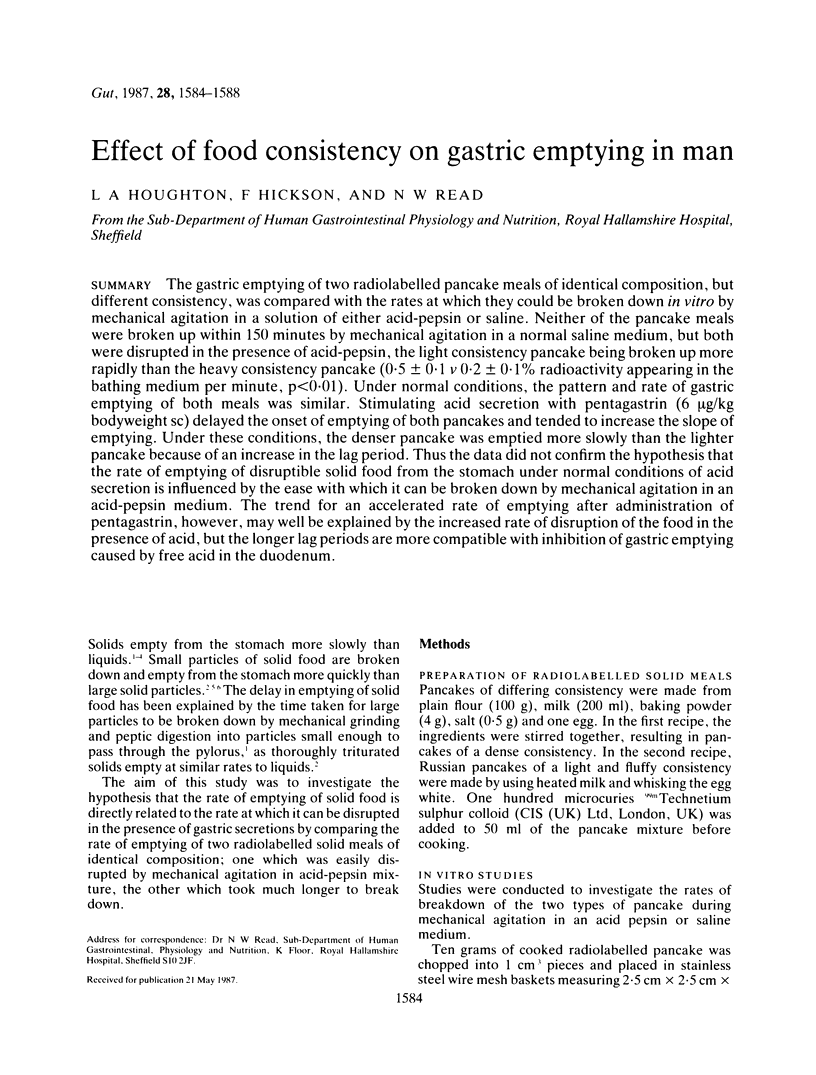
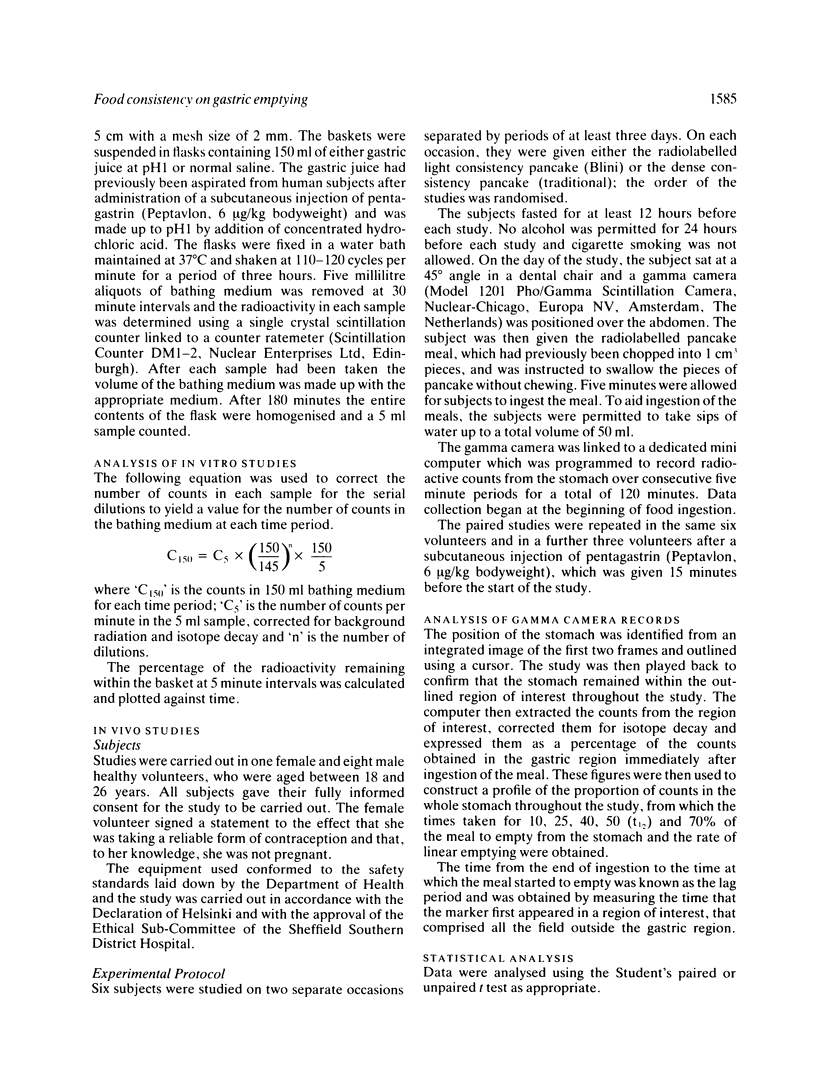
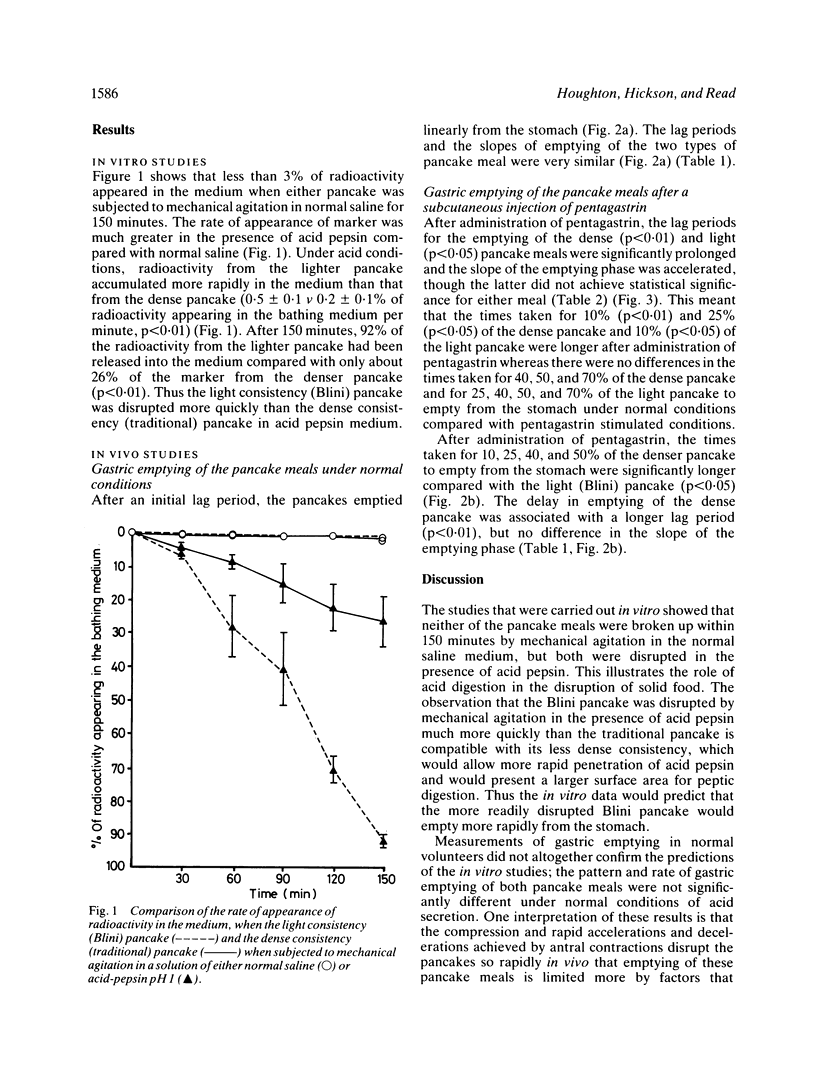
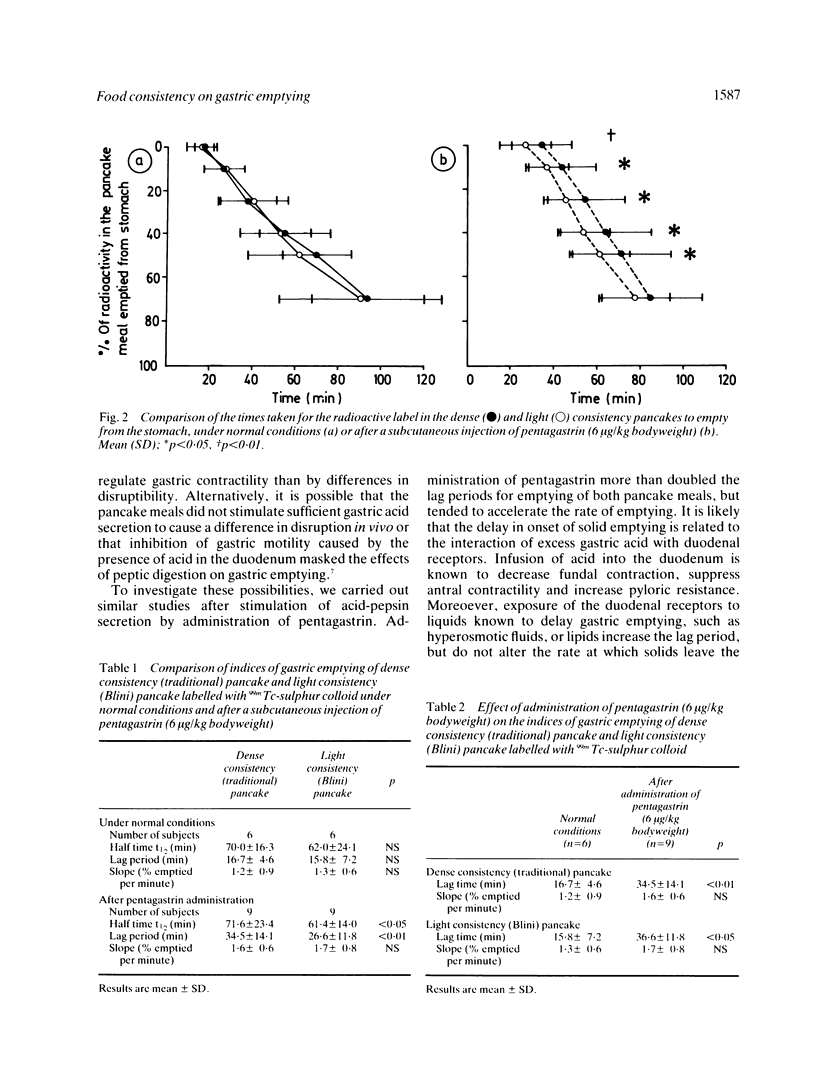
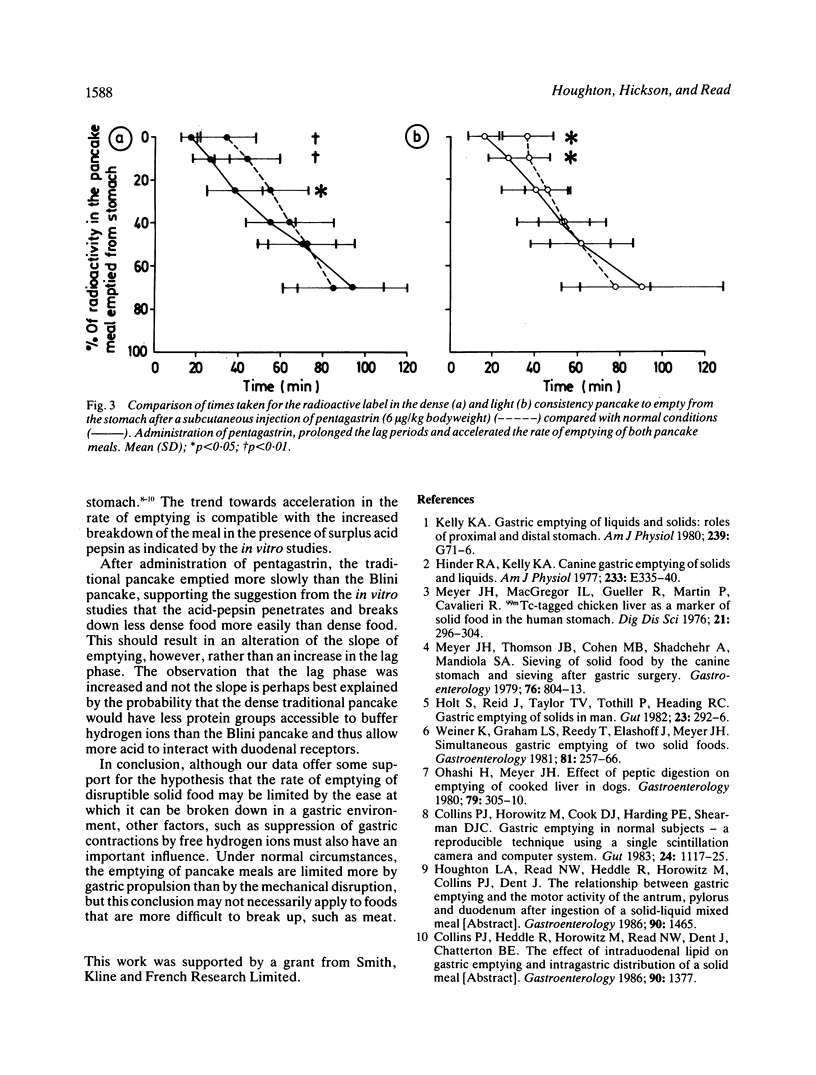
Selected References
These references are in PubMed. This may not be the complete list of references from this article.
- Collins P. J., Horowitz M., Cook D. J., Harding P. E., Shearman D. J. Gastric emptying in normal subjects--a reproducible technique using a single scintillation camera and computer system. Gut. 1983 Dec;24(12):1117–1125. doi: 10.1136/gut.24.12.1117. [DOI] [PMC free article] [PubMed] [Google Scholar]
- Hinder R. A., Kelly K. A. Canine gastric emptying of solids and liquids. Am J Physiol. 1977 Oct;233(4):E335–E340. doi: 10.1152/ajpendo.1977.233.4.E335. [DOI] [PubMed] [Google Scholar]
- Holt S., Reid J., Taylor T. V., Tothill P., Heading R. C. Gastric emptying of solids in man. Gut. 1982 Apr;23(4):292–296. doi: 10.1136/gut.23.4.292. [DOI] [PMC free article] [PubMed] [Google Scholar]
- Meyer J. H., MacGregor I. L., Gueller R., Martin P., Cavalieri R. 99mTc-tagged chicken liver as a marker of solid food in the human stomach. Am J Dig Dis. 1976 Apr;21(4):296–304. doi: 10.1007/BF01071842. [DOI] [PubMed] [Google Scholar]
- Meyer J. H., Thomson J. B., Cohen M. B., Shadchehr A., Mandiola S. A. Sieving of solid food by the canine stomach and sieving after gastric surgery. Gastroenterology. 1979 Apr;76(4):804–813. [PubMed] [Google Scholar]
- Ohashi H., Meyer J. H. Effect of peptic digestion on emptying of cooked liver in dogs. Gastroenterology. 1980 Aug;79(2):305–310. [PubMed] [Google Scholar]
- Weiner K., Graham L. S., Reedy T., Elashoff J., Meyer J. H. Simultaneous gastric emptying of two solid foods. Gastroenterology. 1981 Aug;81(2):257–266. [PubMed] [Google Scholar]


